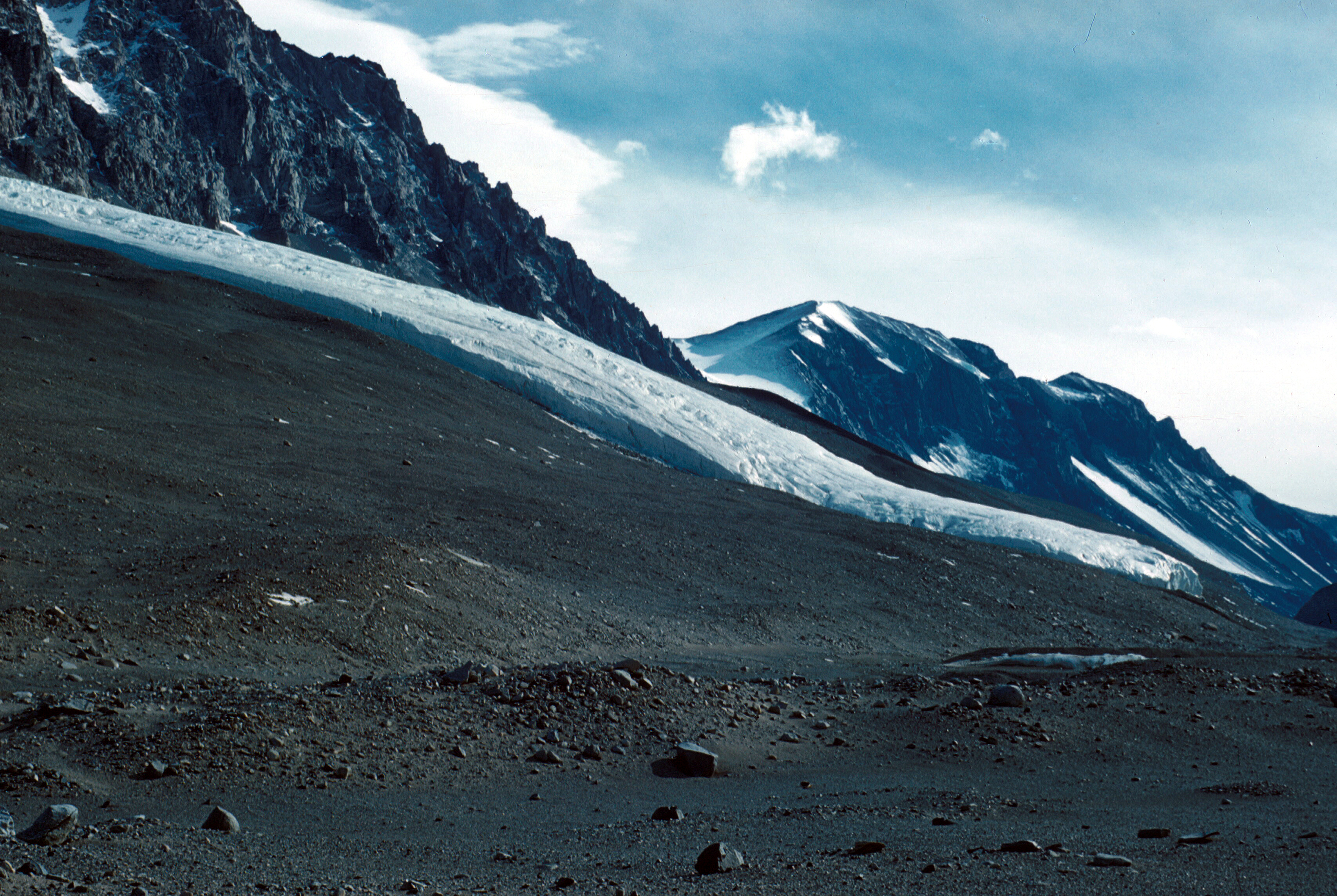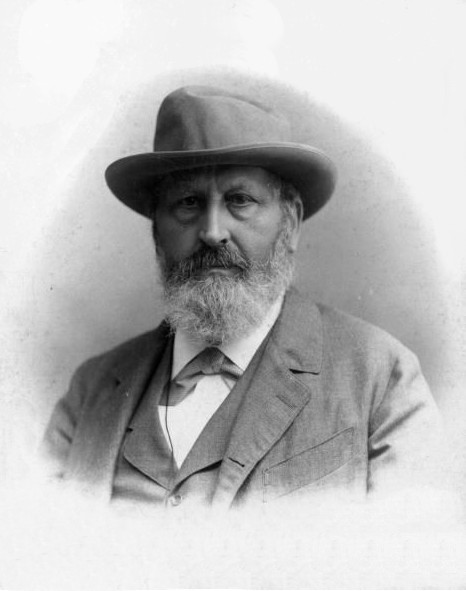|
Suess Glacier
Suess Glacier () is a glacier between Canada Glacier and Lacroix Glacier, flowing south into Taylor Valley in Victoria Land, Antarctica. It was charted and named by the British Antarctic Expedition under Scott, 1910–13, for Professor Eduard Suess Eduard Suess (; 20 August 1831 - 26 April 1914) was an Austrian geologist and an expert on the geography of the Alps. He is responsible for hypothesising two major former geographical features, the supercontinent Gondwana (proposed in 1861) and t ..., noted Austrian geologist and paleontologist. Glaciers of McMurdo Dry Valleys {{McMurdoDryValleys-glacier-stub ... [...More Info...] [...Related Items...] OR: [Wikipedia] [Google] [Baidu] |
Suess Glacier 1958–1959
Suess may refer to: * Süß, a German surname transliterated as Suess * Eduard Suess (1831–1914), an Austrian geologist ** Suess (lunar crater), named for the geologist **Suess (Martian crater), named for the geologist **Suess Glacier, a glacier in Canada named for the geologist **Suess Land, in Greenland named for the geologist *Hans Suess (1909-1993), an Austrian born American physical chemist, nuclear physicist and grandson of the geologist Eduard Suess ** Suess effect, a change in the ratio of the atmospheric concentrations of heavy isotopes of carbon noted by the chemist See also * Seuss (surname) * Suss (other) SUSS is the Singapore University of Social Sciences. SUSS, Suss or Süss may refer to: * Süß, a German surname, including a list of people with the name * Wilhelm Süss (1895-1958), mathematician * "Suss", a word deriving from the Sus law ... * Sues (other) {{disambiguation, surname ... [...More Info...] [...Related Items...] OR: [Wikipedia] [Google] [Baidu] |
Glacier
A glacier (; ) is a persistent body of dense ice that is constantly moving under its own weight. A glacier forms where the accumulation of snow exceeds its Ablation#Glaciology, ablation over many years, often Century, centuries. It acquires distinguishing features, such as Crevasse, crevasses and Serac, seracs, as it slowly flows and deforms under stresses induced by its weight. As it moves, it abrades rock and debris from its substrate to create landforms such as cirques, moraines, or fjords. Although a glacier may flow into a body of water, it forms only on land and is distinct from the much thinner sea ice and lake ice that form on the surface of bodies of water. On Earth, 99% of glacial ice is contained within vast ice sheets (also known as "continental glaciers") in the polar regions, but glaciers may be found in mountain ranges on every continent other than the Australian mainland, including Oceania's high-latitude oceanic island countries such as New Zealand. Between lati ... [...More Info...] [...Related Items...] OR: [Wikipedia] [Google] [Baidu] |
Canada Glacier
Canada Glacier is a small glacier flowing south-east into the northern side of Taylor Valley in Victoria Land, Antarctica. It is in the Ross Dependency. Its melting season is in the summer. Description The glacier receives less than 10 cm of snowfall annually, and is (technically) an ecosystem. Its seasonal melting feeds Lake Hoare to the west and Lake Fryxell to the east. At the north side of its head sit the Hothem Cliffs. History The glacier was discovered and named in the course of the Terra Nova Expedition (1910–1913), under Robert Scott. Charles S. Wright, a Canadian physicist, was a member of the party that explored the area. Antarctic Specially Protected Area An area of about 1 km2 on the eastern side of the glacier is protected under the Antarctic Treaty System as Antarctic Specially Protected Area (ASPA) No.131 because it contains some of the richest plant growth (bryophytes and algae) in the McMurdo Dry Valleys region. It is exceptionally importan ... [...More Info...] [...Related Items...] OR: [Wikipedia] [Google] [Baidu] |
Lacroix Glacier
Lacroix Glacier () is a glacier between Suess Glacier and Matterhorn Glacier, which flows southeast into Taylor Valley in Victoria Land, Antarctica. It was mapped by the British Antarctic Expedition, 1910–13, under Robert Falcon Scott Captain Robert Falcon Scott, , (6 June 1868 – c. 29 March 1912) was a British Royal Navy officer and explorer who led two expeditions to the Antarctic regions: the ''Discovery'' expedition of 1901–1904 and the ill-fated ''Terra Nov ..., and named after Alfred Lacroix, as was Mount Lacroix. References Glaciers of McMurdo Dry Valleys {{McMurdoDryValleys-glacier-stub ... [...More Info...] [...Related Items...] OR: [Wikipedia] [Google] [Baidu] |
Taylor Valley
Taylor Valley is the southernmost of the three large McMurdo Dry Valleys in the Transantarctic Mountains, Victoria Land, Antarctica, located west of McMurdo Sound at approximately . The valley extends from Taylor Glacier in the west to McMurdo Sound at Explorers Cove at the northwest head of New Harbour in the east and is about long. It was once occupied by the receding Taylor Glacier, from which it derives its name. Taylor Valley contains Lake Bonney in the west (inward), and Lake Fryxell in the east (coastward), and Lake Hoare, Lake Chad, Lake Popplewell, Mummy Pond and Parera Pond close together between the two. Further east of Lake Bonney is Pearse Valley. Taylor Valley is separated from Wright Valley in the north by Asgard Range, and from Ferrar Glacier in the south by Kukri Hills. At its southernmost end, Taylor Valley becomes Quinn Gully, a mainly ice-free gully, which descends between MacDonald Hills and Hjorth Hill to Explorers Cove in New Harbour. It was named by ... [...More Info...] [...Related Items...] OR: [Wikipedia] [Google] [Baidu] |
Victoria Land
Victoria Land is a region in eastern Antarctica which fronts the western side of the Ross Sea and the Ross Ice Shelf, extending southward from about 70°30'S to 78°00'S, and westward from the Ross Sea to the edge of the Antarctic Plateau. It was discovered by Captain James Clark Ross in January 1841 and named after Queen Victoria. The rocky promontory of Minna Bluff is often regarded as the southernmost point of Victoria Land, and separates the Scott Coast to the north from the Hillary Coast of the Ross Dependency to the south. The region includes ranges of the Transantarctic Mountains and the McMurdo Dry Valleys (the highest point being Mount Abbott in the Northern Foothills), and the flatlands known as the Labyrinth. The Mount Melbourne is an active volcano in Victoria Land. Early explorers of Victoria Land include James Clark Ross and Douglas Mawson. In 1979, scientists discovered a group of 309 meteorites in Antarctica, some of which were found near the Allan Hills in ... [...More Info...] [...Related Items...] OR: [Wikipedia] [Google] [Baidu] |
Antarctica
Antarctica () is Earth's southernmost and least-populated continent. Situated almost entirely south of the Antarctic Circle and surrounded by the Southern Ocean, it contains the geographic South Pole. Antarctica is the fifth-largest continent, being about 40% larger than Europe, and has an area of . Most of Antarctica is covered by the Antarctic ice sheet, with an average thickness of . Antarctica is, on average, the coldest, driest, and windiest of the continents, and it has the highest average elevation. It is mainly a polar desert, with annual precipitation of over along the coast and far less inland. About 70% of the world's freshwater reserves are frozen in Antarctica, which, if melted, would raise global sea levels by almost . Antarctica holds the record for the lowest measured temperature on Earth, . The coastal regions can reach temperatures over in summer. Native species of animals include mites, nematodes, penguins, seals and tardigrades. Where vegetation o ... [...More Info...] [...Related Items...] OR: [Wikipedia] [Google] [Baidu] |
British Antarctic Expedition, 1910–13
The ''Terra Nova'' Expedition, officially the British Antarctic Expedition, was an expedition to Antarctica which took place between 1910 and 1913. Led by Captain Robert Falcon Scott, the expedition had various scientific and geographical objectives. Scott wished to continue the scientific work that he had begun when leading the ''Discovery'' Expedition from 1901 to 1904, and wanted to be the first to reach the geographic South Pole. He and four companions attained the pole on 17 January 1912, where they found that a Norwegian team led by Roald Amundsen had preceded them by 34 days. Scott's party of five died on the return journey from the pole; some of their bodies, journals, and photographs were found by a search party eight months later. The expedition, named after its supply ship, was a private venture financed by public contributions and a government grant. It had further backing from the Admiralty, which released experienced seamen to the expedition, and from the Royal ... [...More Info...] [...Related Items...] OR: [Wikipedia] [Google] [Baidu] |
Eduard Suess
Eduard Suess (; 20 August 1831 - 26 April 1914) was an Austrian geologist and an expert on the geography of the Alps. He is responsible for hypothesising two major former geographical features, the supercontinent Gondwana (proposed in 1861) and the Tethys Ocean. Biography Eduard Suess was born on 20 August 1831 in London, England, the oldest son of Adolph Heinrich Suess, a Lutheran Saxon merchant, and mother Eleonore Friederike Zdekauer. Adolph Heinrich Suess was born on 11 March 1797 in Saxony, Holy Roman Empire and died on 24 May 1862 in Vienna, Austrian Empire, German confederation; Eleonore Friederike Zdekauer was born in Prague, nowadays part of the Czech Republic, which once belonged to the Holy Roman Empire and the Austrian Empire. When Eduard Suess was born, his family relocated to Prague, and then to Vienna when he was 14. He became interested in geology at a young age. While working as an assistant at the Hofmuseum in Vienna, he published his first paper—on the g ... [...More Info...] [...Related Items...] OR: [Wikipedia] [Google] [Baidu] |





